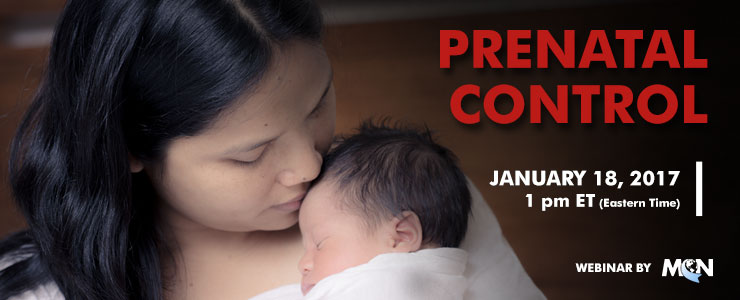A kit from the CDC designed to help reduce the risk of infection by the Zika virus. "If you live in a state or area with the mosquito that spreads the Zika virus and are concerned about Zika, build your own Zika Prevention Kit (...). Reducing the risk for Zika is particularly important for pregnant women."
Information from the CDC on the Zika Virus and pregnant women.
Zika educatinal materials from the Texas Department of State Health Services which includes fact sheets, push cards, posters, and TV PSAs. Available in both English and Spanish.
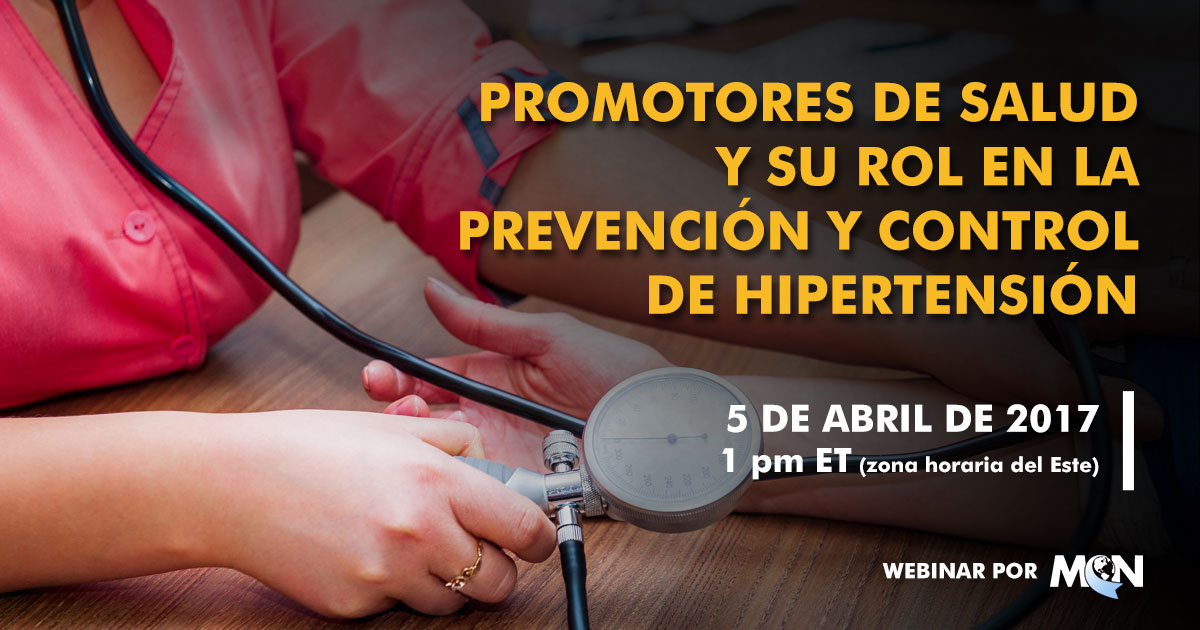
FECHA DE GRABACION: 5 de Abril de 2017, 1 pm ET (zona horaria del Este)
ORADORA: Ileana Ponce-González, MD, MPH, CNC
Crédito de educación continua
Para recibir credito de Trabajador/a de Salud Comunitaria o Educacion de Continua de Enfermera después de ver alguno de estos seminarios usted debe hacer lo siguiente:
- Completar la evaluación participante asociado a cada webinar
- Enviar un correo electrónico con su nombre y apellido indicando que ha completado a contedu@migrantclinician.org
Descripción
En este webinar, los participantes podrán identificar las medidas de desempeño de la Administración de Servicios de Recursos de Salud relacionadas con la hipertensión, describir cómo medir la hipertensión en el cuerpo, entender cómo alentar a los pacientes a controlar y manejar su presión arterial alta y entender las principales barreras que enfrentan pacientes en el control y manejo de su presión arterial alta.
Objetivos de aprendizaje
- Identificar los síntomas y signos de presiones sanguíneas altas
- Describir cómo se puede medir la hipertensión en el cuerpo
- Alentar a los pacientes a controlar y manejar su presión arterial alta
- Comprender las principales barreras que enfrentan los pacientes en el control de su presión arterial alta
Lectura Adicional
- HRSA: Hypertension Controls
- NIH: Help Your Heart: Control Your High Blood Pressure - Handouts
- NIH: Description of High Blood Pressure
- NIH: How Is High Blood Pressure Treated?
- NIH: Impediments to and potential strategies for effective blood pressure control
- USPSTF, AAFP Finalize Hypertension Screening Recommendations for Adults
- WSDF: Improving the Screening, Prevention, and Management of Hypertension
Este proyecto cuenta con el apoyo de la Administración de Recursos y Servicios de Salud (HRSA) del Departamento de Salud y Servicios Humanos de los Estados Unidos bajo el acuerdo de cooperación número U30CS09742, Asistencia Técnica a Centros de Salud Comunitarios y Migrantes y Personas sin Hogar por $ 1,094,709.00 con 0% del total Proyecto NCA financiado con fuentes no federales. Esta información o contenido y las conclusiones son las del autor y no deben ser interpretadas como la posición o política oficial de, ni cualquier endosos deben ser inferidos por HRSA, HHS o el Gobierno de los Estados Unidos.
- http://migrantclinician.adobeconnect.com/p71v9ojksgg/?OWASP_CSRFTOKEN=19499ccb24fdb83af0f6a5e559d20d4f5fffa5406927c78fbb67676b38141c94
- http://www.hrsa.gov/quality/toolbox/measures/hypertension/
- https://www.nhlbi.nih.gov/health-pro/resources/heart/hispanic-health-manual/session-4#handouts
- https://www.nhlbi.nih.gov/health/health-topics/topics/hbp
- https://www.nhlbi.nih.gov/health/health-topics/topics/hbp/treatment
- https://www.ncbi.nlm.nih.gov/pmc/articles/PMC1993926/table/tbl1/
- http://www.aafp.org/news/health-of-the-public/20151015htnprevrec.html
- https://www.healthit.gov/sites/default/files/13_bptoolkit_e13l.pdf
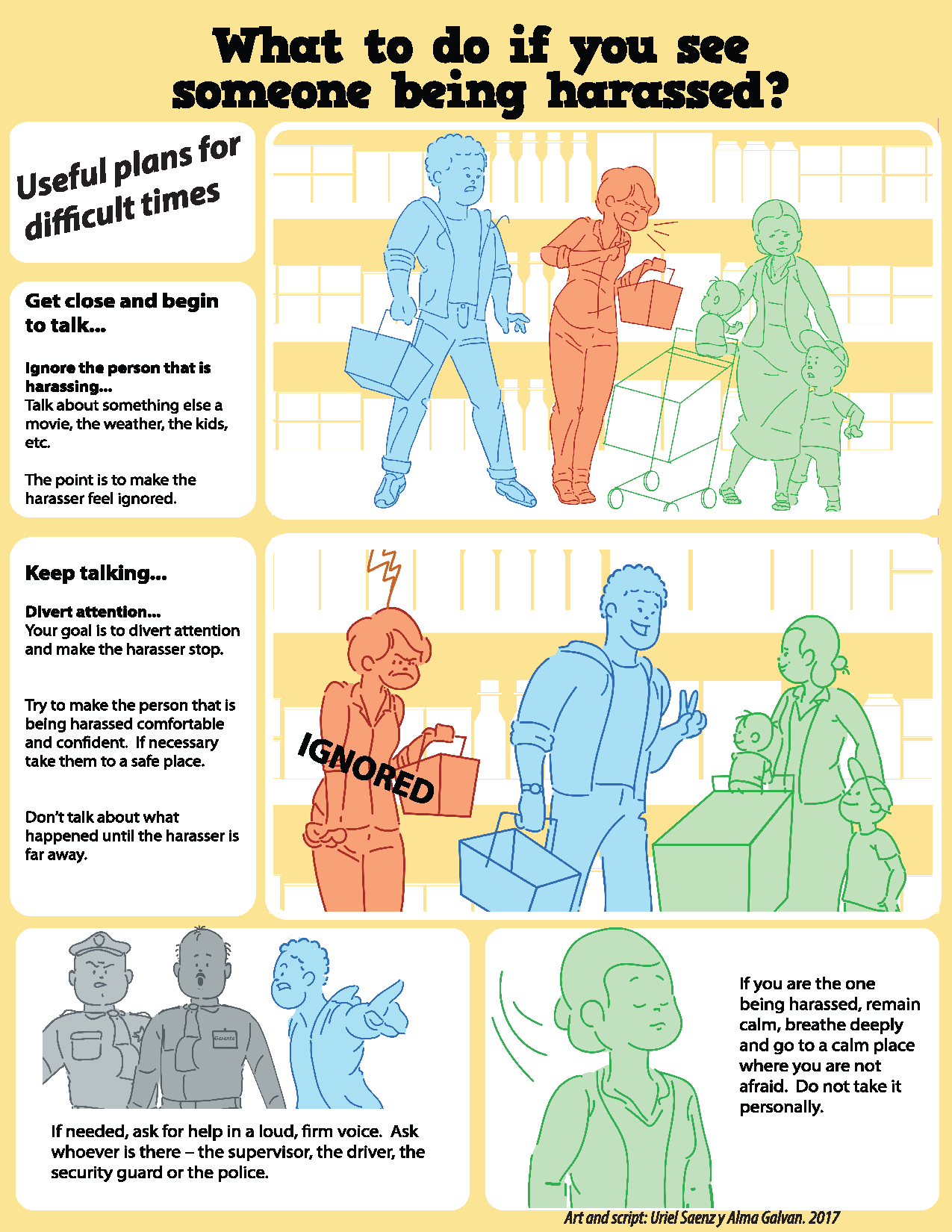
A guide to know how to react when you see someone being harassed. Art and script by Uriel Saenz and Alma Galván.
Chapter 14: Pesticides Are Poison from the Hesperian.org health guide: A Community Guide to Environmental Health.

FECHA DE GRABACION: 1 de Febrero 2017, 1 pm ET (zona horaria del Este)
ORADORAS: Ileana Ponce-González, MD, MPH, CNC and Candace Kugel, FNP, CNM, MS
Crédito de educación continua
Para recibir credito de Trabajador/a de Salud Comunitaria o Educacion de Continua de Enfermera después de ver alguno de estos seminarios usted debe hacer lo siguiente:
- Completar la evaluación participante asociado a cada webinar
- Enviar un correo electrónico con su nombre y apellido indicando que ha completado a contedu@migrantclinician.org
Descripción
En este seminario se identificaran las dos medidas de rendimiento de HRSA relacionados con el cuidado del embarazo, así como los dos factores de riesgo únicos para las mujeres embarazadas de los trabajadores agrícolas migrantes. También se reflexionar sobre el papel de los trabajadores sanitarios de la comunidad para mejorar el acceso a la atención prenatal de las mujeres embarazadas.
Objetivos de aprendizaje
- Identificar dos medidas de rendimiento de HRSA relacionados con la atención durante el embrazo
- Reflexionar sobre el papel de los trabajadores de salud comunitarios para mejorar el acceso a la atención prenatal
- Identificar dos factores de riesgo únicos para las trabajadoras migrantes y embarazadas del campo
- Analizar la disposición de su propio lugar de trabajo en asistir mujeres embarazadas obtener acceso a la atención prenatal
Lectura Adicional
- NCBI PubMed: Early prenatal care and community health workers
This project is supported by the Health Resources and Services Administration (HRSA) of the U.S. Department of Health and Human Services (HHS) under cooperative agreement number U30CS09742, Technical Assistance to Community and Migrant Health Centers and Homeless for $1,094,709.00 with 0% of the total NCA project financed with non-federal sources. This information or content and conclusions are those of the author and should not be construed as the official position or policy of, nor should any endorsements be inferred by HRSA, HHS or the U.S. Government.
DATE: January 18, 2017
SPEAKERS: Candace Kugel, ARNP, CNM
Continuing Education Credit
To receive CME* or CNE credit after viewing this webinar, you must:
- Complete the Participant Evaluation associated with this webinar
- Send an email with your first and last name stating which webinar you completed to contedu@migrantclinician.org
Description
In this seminar participants will be able to identify the HRSA performance measures related to pregnancy care, as well as two unique risk factors for pregnant women migrant farm workers during the workshop. We will also reflect on the important role that community health workers play in improving access to prenatal care for pregnant women.
Learning Objectives
- Identify the two HRSA performance measures related to pregnancy care
- Reflect on the role of community health workers in improving access to prenatal care
- Identify two unique risk factors for pregnant migrant farmworker women
- Analyze the readiness of their own work setting to assist pregnant women to access prenatal care
Further Reading
- Text4Baby: A free service that provides health education by text to pregnant women and new mothers in English and Spanish. www.text4baby.org.
- Rural Women’s Health Project (www.rwhp.org) pregnancy fotonovelas
- Teach with Stories Prenatal Care—fotonovela series (www.augercommunications.com)
- Pesticides & pregnancy handouts (www1.wfubmc.edu/fam_med/Research/Educational)
- HRSA Find a Health Center http://findahealthcenter.hrsa.gov/
- Hesperian Health Guides (hesperian.org)
This project is supported by the Health Resources and Services Administration (HRSA) of the U.S. Department of Health and Human Services (HHS) under cooperative agreement number U30CS09742, Technical Assistance to Community and Migrant Health Centers and Homeless for $1,094,709.00 with 0% of the total NCA project financed with non-federal sources. This information or content and conclusions are those of the author and should not be construed as the official position or policy of, nor should any endorsements be inferred by HRSA, HHS or the U.S. Government.
- https://youtu.be/DxxPDot6tgE
- https://www.text4baby.org/
- http://www.text4baby.org
- http://www.rwhp.org/
- http://www.rwhp.org
- http://www.augercommunications.com/
- http://www.augercommunications.com
- http://www.wakehealth.edu/Research/Family-Medicine/Educational-Materials.htm
- http://www1.wfubmc.edu/fam_med/Research/Educational
- https://findahealthcenter.hrsa.gov/
- http://findahealthcenter.hrsa.gov/
- http://hesperian.org/
A flier created by the CDC's National Diabetes Education Program as a guide for patients in the management of medicines to treat diabetes. Available in English.
- Diabetes and You - All Medicines Matter.pdf (442.21 KB)
Substance Use Warmline
Peer-to-Peer Consultation and Decision Support
10 am – 6 pm EST Monday - Friday
855-300-3595
Free and confidential consultation for clinicians from the Clinician Consultation Center at San Francisco General Hospital focusing on substance use in primary care
Objectives of the Substance Use Warmline:
- Support primary care providers in managing complex patients with addiction, chronic pain, and behavioral health issues
- Improve the safety of medication regimens to decrease the risk of overdose
- Enhance the treatment, care and support for people living with or at risk for HIV
- Discuss useful strategies for clinicians in managing their patients living with substance use, addiction and chronic pain.
Consultation topics include:
- Assessment and treatment of opioid, alcohol, and other substance use disorders
- Approaches to suspected misuse, abuse, or diversion of prescribed opioids
- Methods to simplify opioid-based pain regimens to reduce risk of misuse and toxicity
- Urine toxicology testing- when to use it and what it means
- Use of buprenorphine and the role of methadone maintenance
- Withdrawal management for opioids, alcohol, and other CNS depressants
- Harm reduction strategies and overdose prevention
- Managing substance use in special populations (pregnancy, HIV, hepatitis)
- Productive ways of discussing (known or suspected) addiction with patients.
The CCC’s multi-disciplinary team of expert physicians, clinical pharmacists and nurses provides consultation to help clinicians manage complex patient needs, medication safety, and a rapidly evolving regulatory environment.
Learn more at http://nccc.ucsf.edu/clinician-consultation/substance-use-management
- CCC Substance Use Warmline Flier EST 7.25.16.pdf (112.12 KB)
This 90-minute webinar was created for physicians, nurses, and other health professionals who treat and case manage patients with active TB. The webinar introduced the 2016 Official American Thoracic Society/Centers for Disease Control and Prevention/Infectious Diseases Society of America Clinical Practice Guidelines: Treatment of Drug-Susceptible Tuberculosis. This training highlighted the guidelines development process, the key changes in recommendations, and discussed the evidence supporting the changes. The webinar was originally presented on November 4, 2016. This training was jointly sponsored by all 5 RTMCCs.
Diabetes HealthSense provides easy access to resources to help you live well and meet your goals—whether you have diabetes or are at risk for the disease. Available in English.
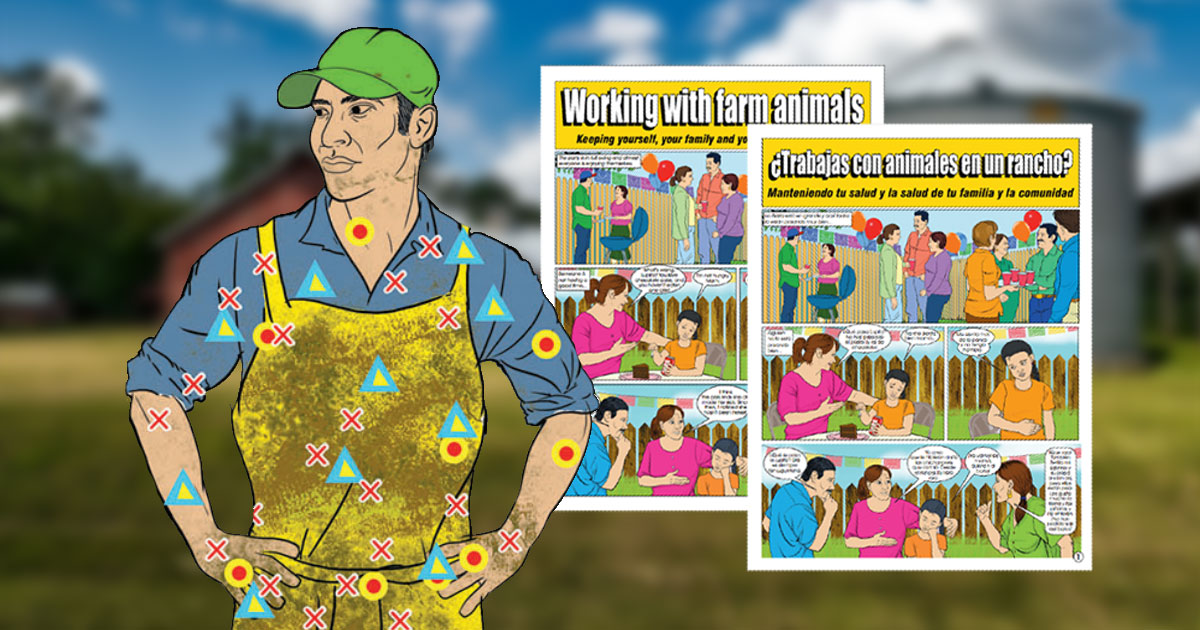
Libro cómic educativo bilingüe sobre cómo prevenir las enfermedades zoonóticas. Desarrollado por MCN en colaboración con la Universidad Estatal de Ohio.
- Working with farm animals_1.pdf (13.33 MB)
- Trabajos con animales en un rancho_1.pdf (13.31 MB)
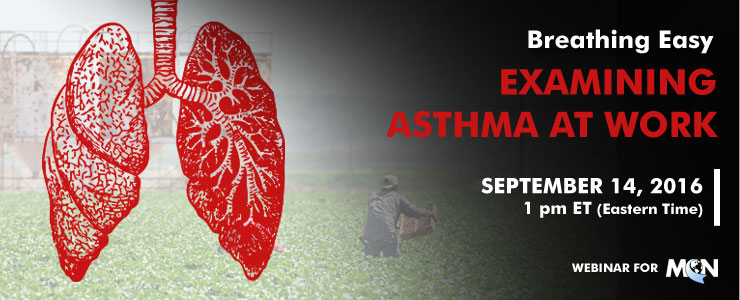
DATE RECORDED: September 14, 2016 at 1 pm ET
PRESENTED BY: Robert Harrison, M.D., M.P.H.
- Recorded Webinar
- Participant Evaluation
- Presentation Slides (PDF)
This material will be produced under grant number SH-27640-15-60-F-48-SH5 from the Occupational Safety and Health Administration, U.S. Department of Labor. It will not necessarily reflect the views or policies of the U.S. Department of Labor, nor does mention of trade names, commercial products, or organizations imply endorsement by the U.S. Government.

DATE RECORDED: September 14, 2016 at 1 pm ET
PRESENTED BY: Robert Harrison, M.D., M.P.H.
This material will be produced under grant number SH-27640-15-60-F-48-SH5 from the Occupational Safety and Health Administration, U.S. Department of Labor. It will not necessarily reflect the views or policies of the U.S. Department of Labor, nor does mention of trade names, commercial products, or organizations imply endorsement by the U.S. Government.
- https://youtu.be/MpNJ-qxL1O0
- http://www.migrantclinician.org/
- https://www.osha.gov/Publications/OSHA3707.pdf
- https://www.thoracic.org/statements/resources/eold/an-official-ats-statement-work-exacerbated-asthma.pdf
- http://journal.publications.chestnet.org/article.aspx?articleid=1044851
- http://www.nj.gov/health/eoh/survweb/wra/documents/asthmagens.pdf
- http://www.ccohs.ca/oshanswers/diseases/asthma.html
- http://www.aoec.org
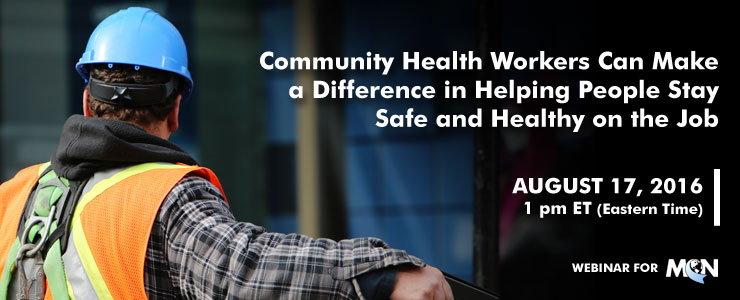
DATE RECORDED: August 17, 2016 at 1 pm ET
PRESENTED BY: Amy Liebman, MPA, MA and Wilson Augustave, member of MCN’s Board of Directors and Senior HIV Case Manager at Finger Lakes Community Health
This material will be produced under grant number SH-27640-15-60-F-48-SH5 from the Occupational Safety and Health Administration, U.S. Department of Labor. It will not necessarily reflect the views or policies of the U.S. Department of Labor, nor does mention of trade names, commercial products, or organizations imply endorsement by the U.S. Government.
- http://migrantclinician.adobeconnect.com/p50hmpih2ti/?OWASP_CSRFTOKEN=3e2b187aeeb1282a41d5df37d8a98c307a7e00006662aca9d5f21dc12aa036c4
- http://www.migrantclinician.org/
- http://workerscomphub.org/
- http://workerscomphub.org/navigating-system
- https://www.osha.gov/workers/index.html
- http://www.coshnetwork.org/know-your-rights
- http://hesperian.org/books-and-resources/
The 1999–2013 United States Cancer Statistics (USCS): Incidence and Mortality Web-based Report includes the official federal statistics on cancer incidence from registries that have high-quality data, and cancer mortality statistics. It is produced by the Centers for Disease Control and Prevention (CDC) and the National Cancer Institute (NCI). This report shows that in 2013, 1,536,119 Americans received a new diagnosis of invasive cancer, and 584,872 Americans died of this disease (these counts do not include in situ cancers or the more than 1 million cases of basal and squamous cell skin cancers diagnosed each year).
This year’s report features information on invasive cancer cases diagnosed during 2013, the most recent year of incidence data available, among residents of 49 states, six metropolitan areas, and the District of Columbia—geographic areas in which about 99% of the U.S. population resides. Incidence data are from CDC’s National Program of Cancer Registries (NPCR) and NCI’s Surveillance, Epidemiology, and End Results (SEER) Program. Data from population-based central cancer registries in these states and metropolitan areas meet the criteria for inclusion in this report.
The report also provides cancer mortality data collected and processed by CDC’s National Center for Health Statistics. Mortality statistics, based on records of deaths that occurred during 2013, are available for all 50 states and the District of Columbia.
The report also includes incidence rates and counts for Puerto Rico for 2009 through 2013 by sex and age, as well brain tumor and childhood cancer data.
USCS data are presented in the following applications—
- https://nccd.cdc.gov/uscs/?s_cid=govD_USCS2013_1
- http://links.govdelivery.com/track?type=click&enid=ZWFzPTEmbWFpbGluZ2lkPTIwMTYwNzA2LjYxMjE2OTcxJm1lc3NhZ2VpZD1NREItUFJELUJVTC0yMDE2MDcwNi42MTIxNjk3MSZkYXRhYmFzZWlkPTEwMDEmc2VyaWFsPTE3MDg5NzQwJmVtYWlsaWQ9dGx5b25zQG1pZ3JhbnRjbGluaWNpYW4ub3JnJnVzZXJpZD10bHlvbnNAbWlncmFudGNsaW5pY2lhbi5vcmcmZmw9JmV4dHJhPU11bHRpdmFyaWF0ZUlkPSYmJg%3D%3D&101=&https%3A%2F%2Fnccd_cdc_gov%2Fuscs%2F%3Fs_cid=govD_USCS2013_2
- http://links.govdelivery.com/track?type=click&enid=ZWFzPTEmbWFpbGluZ2lkPTIwMTYwNzA2LjYxMjE2OTcxJm1lc3NhZ2VpZD1NREItUFJELUJVTC0yMDE2MDcwNi42MTIxNjk3MSZkYXRhYmFzZWlkPTEwMDEmc2VyaWFsPTE3MDg5NzQwJmVtYWlsaWQ9dGx5b25zQG1pZ3JhbnRjbGluaWNpYW4ub3JnJnVzZXJpZD10bHlvbnNAbWlncmFudGNsaW5pY2lhbi5vcmcmZmw9JmV4dHJhPU11bHRpdmFyaWF0ZUlkPSYmJg%3D%3D&102=&https%3A%2F%2Fnccd_cdc_gov%2FDCPC_INCA%2F%3Fs_cid=govD_USCS2013_3
- http://links.govdelivery.com/track?type=click&enid=ZWFzPTEmbWFpbGluZ2lkPTIwMTYwNzA2LjYxMjE2OTcxJm1lc3NhZ2VpZD1NREItUFJELUJVTC0yMDE2MDcwNi42MTIxNjk3MSZkYXRhYmFzZWlkPTEwMDEmc2VyaWFsPTE3MDg5NzQwJmVtYWlsaWQ9dGx5b25zQG1pZ3JhbnRjbGluaWNpYW4ub3JnJnVzZXJpZD10bHlvbnNAbWlncmFudGNsaW5pY2lhbi5vcmcmZmw9JmV4dHJhPU11bHRpdmFyaWF0ZUlkPSYmJg%3D%3D&103=&https%3A%2F%2Fnccd_cdc_gov%2FStateCancerFacts%2F%3Fs_cid=govD_USCS2013_4
A CDC resource page where there is current Zika updates and resources.
A CDC resource page where there is current Zika updates and resources.
Zika virus infection during pregnancy can cause congenital microcephaly and brain abnormalities (1,2). Since 2015, Zika virus has been spreading through much of the World Health Organization’s Region of the Americas, including U.S. territories. Zika virus is spread through the bite of Aedes aegypti or Aedes albopictus mosquitoes, by sex with an infected partner, or from a pregnant woman to her fetus during pregnancy.* CDC estimates that 41 states are in the potential range of Aedes aegypti or Aedes albopictus mosquitoes (3), and on July 29, 2016, the Florida Department of Health identified an area in one neighborhood of Miami where Zika virus infections in multiple persons are being spread by bites of local mosquitoes. Read full article here.
"Zika virus is a flavivirus transmitted primarily by Aedes aegypti and Aedes albopictus mosquitoes, and infection can be asymptomatic or result in an acute febrile illness with rash (1). Zika virus infection during pregnancy is a cause of microcephaly and other severe birth defects (2). Infection has also been associated with Guillain-Barré syndrome (GBS) (3) and severe thrombocytopenia (4,5). In December 2015, the Puerto Rico Department of Health (PRDH) reported the first locally acquired case of Zika virus infection. This report provides an update to the epidemiology of and public health response to ongoing Zika virus transmission in Puerto Rico (6,7). A confirmed case of Zika virus infection is defined as a positive result for Zika virus testing by reverse transcription–polymerase chain reaction (RT-PCR) for Zika virus in a blood or urine specimen. A presumptive case is defined as a positive result by Zika virus immunoglobulin M (IgM) enzyme-linked immunosorbent assay (MAC-ELISA)* and a negative result by dengue virus IgM ELISA, or a positive test result by Zika IgM MAC-ELISA in a pregnant woman. An unspecified flavivirus case is defined as positive or equivocal results for both Zika and dengue virus by IgM ELISA. During November 1, 2015–July 7, 2016, a total of 23,487 persons were evaluated by PRDH and CDC Dengue Branch for Zika virus infection, including asymptomatic pregnant women and persons with signs or symptoms consistent with Zika virus disease or suspected GBS; 5,582 (24%) confirmed and presumptive Zika virus cases were identified. Persons with Zika virus infection were residents of 77 (99%) of Puerto Rico’s 78 municipalities. During 2016, the percentage of positive Zika virus infection cases among symptomatic males and nonpregnant females who were tested increased from 14% in February to 64% in June. Among 9,343 pregnant women tested, 672 had confirmed or presumptive Zika virus infection, including 441 (66%) symptomatic women and 231 (34%) asymptomatic women. One patient died after developing severe thrombocytopenia (4). Evidence of Zika virus infection or recent unspecified flavivirus infection was detected in 21 patients with confirmed GBS. The widespread outbreak and accelerating increase in the number of cases in Puerto Rico warrants intensified vector control and personal protective behaviors to prevent new infections, particularly among pregnant women."
The 1999–2013 United States Cancer Statistics (USCS): Incidence and Mortality Web-based Report includes the official federal statistics on cancer incidence from registries that have high-quality data, and cancer mortality statistics. It is produced by the Centers for Disease Control and Prevention (CDC) and the National Cancer Institute (NCI). This report shows that in 2013, 1,536,119 Americans received a new diagnosis of invasive cancer, and 584,872 Americans died of this disease (these counts do not include in situ cancers or the more than 1 million cases of basal and squamous cell skin cancers diagnosed each year).
This year’s report features information on invasive cancer cases diagnosed during 2013, the most recent year of incidence data available, among residents of 49 states, six metropolitan areas, and the District of Columbia—geographic areas in which about 99% of the U.S. population resides. Incidence data are from CDC’s National Program of Cancer Registries (NPCR) and NCI’s Surveillance, Epidemiology, and End Results (SEER) Program. Data from population-based central cancer registries in these states and metropolitan areas meet the criteria for inclusion in this report.
The report also provides cancer mortality data collected and processed by CDC’s National Center for Health Statistics. Mortality statistics, based on records of deaths that occurred during 2013, are available for all 50 states and the District of Columbia.
The report also includes incidence rates and counts for Puerto Rico for 2009 through 2013 by sex and age, as well brain tumor and childhood cancer data.
USCS data are presented in the following applications—
- https://nccd.cdc.gov/uscs/?s_cid=govD_USCS2013_1
- http://links.govdelivery.com/track?type=click&enid=ZWFzPTEmbWFpbGluZ2lkPTIwMTYwNzA2LjYxMjE2OTcxJm1lc3NhZ2VpZD1NREItUFJELUJVTC0yMDE2MDcwNi42MTIxNjk3MSZkYXRhYmFzZWlkPTEwMDEmc2VyaWFsPTE3MDg5NzQwJmVtYWlsaWQ9dGx5b25zQG1pZ3JhbnRjbGluaWNpYW4ub3JnJnVzZXJpZD10bHlvbnNAbWlncmFudGNsaW5pY2lhbi5vcmcmZmw9JmV4dHJhPU11bHRpdmFyaWF0ZUlkPSYmJg%3D%3D&101=&https%3A%2F%2Fnccd_cdc_gov%2Fuscs%2F%3Fs_cid=govD_USCS2013_2
- http://links.govdelivery.com/track?type=click&enid=ZWFzPTEmbWFpbGluZ2lkPTIwMTYwNzA2LjYxMjE2OTcxJm1lc3NhZ2VpZD1NREItUFJELUJVTC0yMDE2MDcwNi42MTIxNjk3MSZkYXRhYmFzZWlkPTEwMDEmc2VyaWFsPTE3MDg5NzQwJmVtYWlsaWQ9dGx5b25zQG1pZ3JhbnRjbGluaWNpYW4ub3JnJnVzZXJpZD10bHlvbnNAbWlncmFudGNsaW5pY2lhbi5vcmcmZmw9JmV4dHJhPU11bHRpdmFyaWF0ZUlkPSYmJg%3D%3D&102=&https%3A%2F%2Fnccd_cdc_gov%2FDCPC_INCA%2F%3Fs_cid=govD_USCS2013_3
- http://links.govdelivery.com/track?type=click&enid=ZWFzPTEmbWFpbGluZ2lkPTIwMTYwNzA2LjYxMjE2OTcxJm1lc3NhZ2VpZD1NREItUFJELUJVTC0yMDE2MDcwNi42MTIxNjk3MSZkYXRhYmFzZWlkPTEwMDEmc2VyaWFsPTE3MDg5NzQwJmVtYWlsaWQ9dGx5b25zQG1pZ3JhbnRjbGluaWNpYW4ub3JnJnVzZXJpZD10bHlvbnNAbWlncmFudGNsaW5pY2lhbi5vcmcmZmw9JmV4dHJhPU11bHRpdmFyaWF0ZUlkPSYmJg%3D%3D&103=&https%3A%2F%2Fnccd_cdc_gov%2FStateCancerFacts%2F%3Fs_cid=govD_USCS2013_4
From the 2016 International Union Against Tuberculosis & Lung Disease Conference
